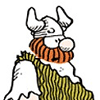Tips on how to keep your dog’s teeth pearly white
Published in Cats & Dogs News
Caring for your dog’s teeth is an important part of grooming and keeping your dog looking their best. It is an integral part of keeping them healthy on a larger scale. Regular dental care and brushing is essential to prevent bad breath and gum disease.
The American Kennel Club shares clues and signs that may mean poor dental health and tips on how to prevent it.
Bad Breath: Contrary to popular belief, bad breath is not natural for dogs. Like our own teeth, plaque and tar build up on dog’s teeth. These bacteria get caught below the gum line and can result in bad breath if their teeth are not brushed regularly. Pay attention to this odor because it can be a sign of periodontal disease in your dog.
Look for signs of gum disease: Look out for bleeding or inflammation in your dog’s gums and if they show signs of pain while brushing. These may be signs of gum disease and you should take your dog to the vet as soon as possible. The most common indication of dental pain is lethargy. It is important to regularly examine your dog’s teeth, as untreated oral infections could spread to other areas of the body. If you see there is accumulated brown tar in your dog’s mouth, they need to have a professional dental cleaning.
Loose or broken teeth: Shifting in dog’s teeth can be a warning sign of numerous things, such as a fractured root or even a disease that can cause poor bone support. When a tooth breaks and exposes a nerve, it can be very painful for your dog and requires immediate attention. If you notice your dog has loose or broken teeth, a trip to the veterinary dentist is necessary.
To prevent dental issues in your pup, consider the following tips:
Brush your dog’s teeth: Brushing your dog’s teeth daily is very important. Use flavored enzymatic toothpaste specifically formulated for dogs and a doggie or child’s toothbrush. Brush your dog’s teeth as you would your own, focusing extra attention on the gum line.
Familiarize your dog with brushing: If your pup is reluctant, start with short sessions. Let your dog lick the brush to start, so they get used to it and begin to accept the process, working up to more thorough brushing sessions. Giving different flavors of toothpaste to see which one they like the best can help them get more comfortable with the process. Make sure to reward your pup with a praise and a dental treat to keep them happy and comfortable.
Alternatives to brushing: Some dogs are unable or unwilling to have their teeth brushed. Alternatively, look for special dental chews or food/water additives. When looking for dental chews, make sure they are easily digestible and are large enough that your dog must chew them before swallowing. These, as well as food additives, should be given daily. If you are using water additives, be sure to change the water daily. Consult with your veterinarian prior to using these alternatives. If you are not brushing your dog’s teeth every day, it is important to have regular dentist visits to monitor signs of dental disease.
For more information on responsible dog ownership, visit the AKC website at www.akc.org.
©2024 American Kennel Club. Visit at akc.org. Distributed by Tribune Content Agency, LLC






Comments